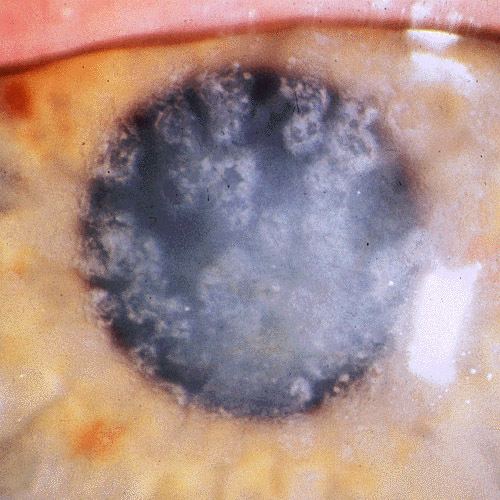 | ||
Granular corneal dystrophy is a slowly progressive corneal dystrophy that most often begins in early childhood.
Contents
Granular corneal dystrophy has two types:
Genetics
Granular corneal dystrophy is caused by a mutation in the TGFBI gene, located on chromosome 5q31. The disorder is inherited in an autosomal dominant manner. This indicates that the defective gene responsible for the disorder is located on an autosome (chromosome 5 is an autosome), and only one copy of the gene is sufficient to cause the disorder, when inherited from a parent who has the disorder.
The gene TGFBI encodes the protein keratoepithelin.
Clinical presentation
Granular corneal dystrophy is diagnosed during an eye examination by an ophthalmologist or optometrist. The lesions consist of central, fine, whitish granular lesions in the cornea. Visual acuity is slightly reduced.
Treatment
Corneal transplant is not needed except in very severe and late cases. Light sensitivity may be overcome by wearing tinted glassess.
